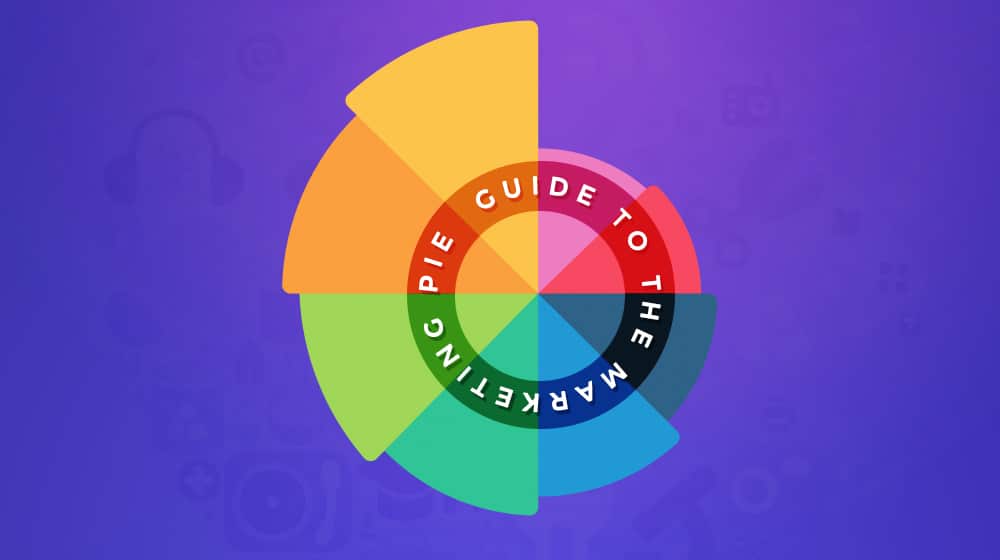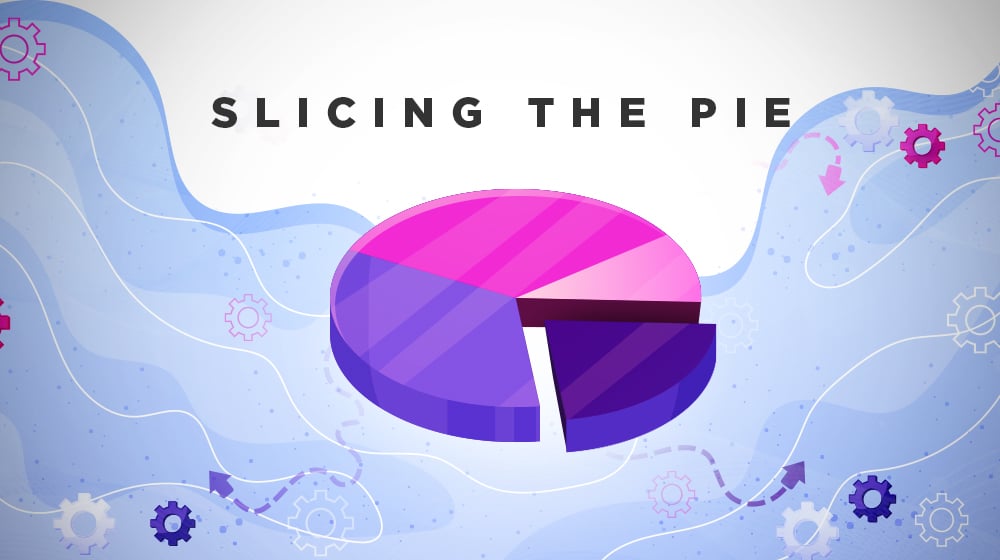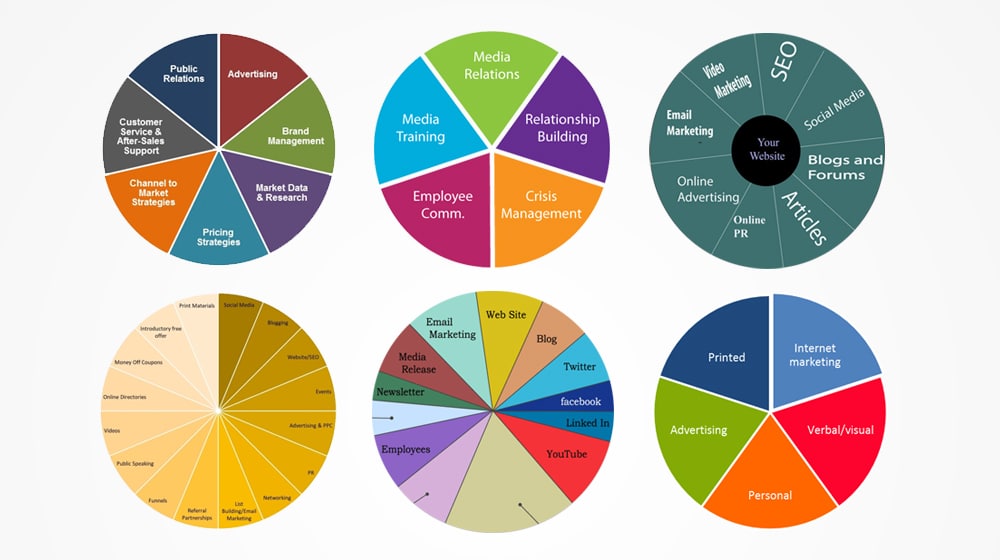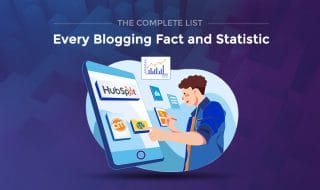Guide to the Marketing Pie: Pieces, Importance, and Diversification

If you hand around in marketing circles for a long time, you'll generally encounter two kinds of people.
The first kind of person is like me. We're the kinds of people who strive to understand marketing at a base level. We want to know how things work, and more importantly, what matters and what doesn't. We don't necessarily just take things at face value, and we question assumptions. For example, I determined that SEO meta descriptions aren't hugely important to search engines, and I've personally felt that the codified "sales funnel" model of marketing is too simplified and is only really useful for businesses with tens of thousands of customers per month.
The second group of people likes to codify everything. They're the ones who set up all those sales funnels, who come up with individual marketing terms, and who speak to each other in a foreign language made up entirely of jargon and acronyms.
Both kinds of people are important to the industry, and this isn't a hard and fast rule or a subtle way of throwing shade at these types of terms. I'm not saying one group or the other is unambiguously right or wrong. I just want to put that out there.
One thing that happens, particularly among the second group of people, is a sort of ossification of terms, assumptions, and standards. This brings me to today's topic: the Marketing Pie.
Alright, let's get into this thing:
What Is the Marketing Pie?
The marketing pie is a spin on the pie chart. Each slice of the pie is a marketing channel. The idea is that a business should strive to make use of the whole pie, rather than just a single slice.
I don't disagree! The basic concept is sound. What I disagree with is when you get a portrayal like this one:

That image is old, sure. Yet I see images like it from a wide range of high-ranking blogs discussing the marketing pie, and I wonder: do you guys listen to yourselves? Tell me, how useful do you think phone book marketing is in 2021? Customer postcards? Sure, I can see it (I get the Bed Bath and Beyond coupons just like everyone else) but for the most part, these are outdated strategies. Marketing evolves, and it evolves quickly, which means jargon and codified strategies need to adapt quickly to keep up.
I also disagree with the pie metaphor directly. Yes, you should use a variety of channels, but when you eat a pie, you cut that pie into equal slices. You decidedly should not cut your marketing channels into equal slices. Every slice should have weight, as determined by how valuable it is to your business.
The amount of "pie" you allocate to PPC should not be equal to the amount you allocate to SEO, which should not be equal to the amount you allocate to creative partnerships. Each different slice of "pie" should be a different size, proportional to its value.
That's where I stand. So, what are my divisions of the marketing pie? Which channels have pieces?
Pieces of the Pie
A modern marketing pie needs to have modern channels as slices. I don't disagree with a few of the choices in the image above, but I do disagree with others. For example, listing "article marketing" and "SEO" as two different slices isn't necessarily true; one is part of the other.

Here's what I define as slices of the marketing pie:
1. Organic web presence. This is everything on your website, encompassing all of your organic SEO, your article marketing, your calls to action, and more. Some people will prefer to divide this into two slices: SEO and Content Marketing. I consider content marketing to be so inextricably linked to SEO that they should both be in the same category.
2. Social media. We all know what social media is. It's one of the most crucial customer outreach, news, and deal propagation channels available, and yet how much you use it can vary dramatically depending on your business. It's also slowly starting to drop off in importance, as other channels pick up steam, such as:
3. Video and other media. A lot of people on social media these days focus less on sites like Facebook and Twitter, and more on sites like Instagram, YouTube, and TikTok. They also frequently consume content in audio formats, such as podcasts, rather than reading social media posts or standard blog posts. Even I've noticed that I watch a lot more videos than I used to.
4. Paid advertising. As you have likely figured out on your own, paid advertising is a universal channel. In this case, however, I'm specifying PPC, otherwise known as pay per click digital advertising. After all, there are a lot of paid advertising channels that don't use the internet, but they're a lot less universally available. Anyone can sign up for Google Ads and start spending money. Comparatively, few people have the budget and resources to produce a television commercial or to rent space on a giant billboard for an online business.
5. Outreach and brand building. As a hybrid of organic and paid efforts, outreach is a powerful marketing channel, and yet it's interlinked with other channels. You can't do a lot of outreach until you've grown to a certain point to attain noteworthiness. Once you've gained a reputation, you can leverage it to work your way up until you're writing for major web properties in your niche. Guest posting, comment marketing, link building, relationship building; it's all part of this slice.
6. Creative partnerships. Some people consider outreach to be part of creative partnerships. Some consider creative partnerships to encompass relationships like affiliate and referral programs. I think it can stand on its own. So, what's in this slice? Joint ventures, trade show attendance, sponsorships, speaking engagements. Anything where you partner with another organization, larger, smaller, or equivalent to your own.
7. Customer engagement. Your existing list of customers is one of your biggest resources. After all, many brands make most of their money not from new customers but returning, repeat, and subscription customers. Keeping your existing customers engaged, active, and aware of your brand efforts is a huge part of modern marketing. This segment can include some social media marketing, though a lot of social media is marketing to non-customers. This slice also includes your email newsletter, physical mailing lists you may have, and other engagement options.
8. Affiliate and referral relationships. Affiliate and referral programs come in two forms for marketing; the kind you do for others, and the kind others do for you. Depending on your business model, you may use one, the other, or both. You might publish content to push an affiliate link, or you might promote a referral program. Alternatively, you might push your engaged customers to promote you via their blogs, which falls under a hybrid of customer engagement and creative partnerships. It's all very flexible.
9. Traditional marketing. Here, I'm considering the sum of all marketing that is done through (primarily) offline methods and channels. Television, radio, billboards, postcards, store signage, magazine ads, phone book advertising, and all that stuff. For a lot of businesses, particularly web-based businesses and small businesses, most of this is either too low a return to care about, or too expensive to be in consideration.
What does the marketing pie represent? Two things: time and money. Your pie represents slices of your overall budget for marketing. It also represents the division of time and labor amongst your team; the total tally of man-hours spent on different slices of the pie.
Crucially, the monetary pie and the temporal pie are different. PPC might take up a large amount of your monetary pie, but through automation, it might not take up much actual time to manage. Conversely, building your organic web presence and SEO is very time-intensive (which I understand, intimately) but doesn't necessarily cost a ton of money, especially if you're doing it all yourself. The amount of money you spend (or make) from affiliate and referral relationships can vary proportionally to the time you spend working on them.
Slicing the Pie
So, how much of a slice should each of these take up? In truth, it depends on the nature of your business, your stage of growth, and your objectives. The balance here can change frequently according to your ad campaigns and your business focus.

For example:
- A new business likely has no existing customers to engage, so the customer engagement slice is small (under 5%) while building up an organic web presence dominates the pie.
- A traditional brick-and-mortar business can take better advantage of traditional marketing channels than other businesses, so that slice of the pie might be larger.
- A B2B brand is likely to have less success on social media than a B2C brand, depending on niche and customer base.
- A business ramping up to a product launch might reduce the traditional, affiliate, and organic slices, while boosting the paid, outreach, and creative partnership slices.
These are just a few examples of how a marketing pie is not just different between businesses, but how it can change throughout a year.
What's more important is realizing one thing:
The pie is a reference. It's a report. The pie shows you where you've been allocating your time and your money, and there are many variations of these types of pie charts. They allow you to build a derivative pie: your pie, with slices weighted by return on investment. Comparing the investment pie and the returns pie allows you to figure out what you can do to optimize where your budget is going.

Is one slice contributing a significant amount of your returns for a disproportionately small investment? Perhaps it can be worthwhile to reallocate some of your time and/or money into that channel. Where do you take the money from? Look for the slice that has a high investment and a low return.
You can also compare the time and money with the returns and look for places you can streamline your time investment. Is one of your strategies taking up a ton of time, but having relatively little returns? I can almost guarantee that the answer is "yes", and that it's the organic web presence doing it. Most businesses are inefficient with their time allocation, particularly small businesses. Efficient use of time is a learned skill, and it can take managers and business owners a long time to perfect it.
One thing to be aware of here is that you may be replacing time with money or money with time, depending on your business. Most of you probably are.
Small businesses frequently spend time to save money. Budgets are smaller and profits aren't unlimited like the giant corporations, so your investment needs to be as minimal as possible. You need to consider the true monetary cost of your slices of pie, by calculating the cost of the time spent. How many people are working on that slice? How many hours go into it? How much do you pay those people for those hours? That's your true financial investment.

Conversely, larger businesses and businesses with funding may frequently substitute time for money. You don't have the staff or the man-hours to handle, say, blogging, so you hire someone to do it for you. Maybe that's an effective use of your money because your team can't handle it as efficiently. Maybe it's an ineffective use of your money because whoever you're outsourcing to is charging much more than their service is worth. I can't tell you which is the case, because that's a per-business calculation.
Serving the Pie
I don't have anything against the people who love talking about the marketing pie, but I just haven't found it to be as useful a tool as they might want. To me, the slice of the pie dedicated to making the pie isn't as helpful as just charting out the data and looking at some tables. If you prefer the graphical representation, that's fine too.
If you want to make use of a marketing pie, feel free to do so. Just remember that's what it is: a tool to be used. You're not letting your marketing pie determine how your marketing should be spent; you're using your marketing pie to represent what is happening, and use it to adjust what you want to happen. Whether you use a pie chart for it, or you just use some tables and graphs, that's up to you.
Your pie might only be cut into two or three pieces, or it might have a dozen pieces. Neither option is wrong - unless of course, it isn't working for you.
Our pie is filled with 100% home-grown blog content. It's not sliced into sharable pieces, but if you want one, we can get you one of your own. Content marketing is what we do best. Hmm, now I want pie...
What do you think? How did you stumble across this topic? Does your marketing pie look or sound different than mine? Please let me know in the comments below! I reply to every comment and I'd love to hear your thoughts.










September 26, 2022
I'm not a big fan of pie charts in general, so I never liked using marketing pies.
October 07, 2022
I agree, it's a bit buzz-wordy. Always amazed at how often it comes up, I thought "It's time I finally write an article on this" 😂